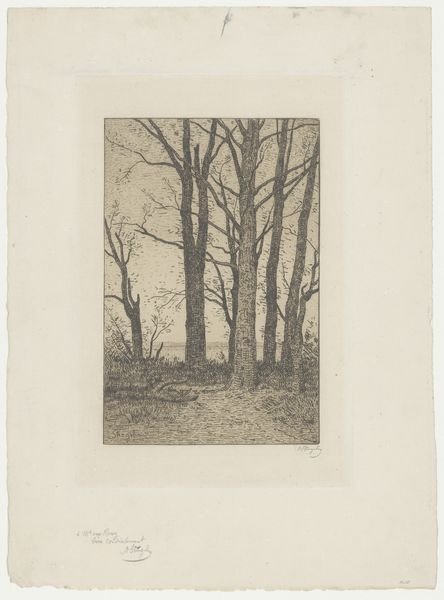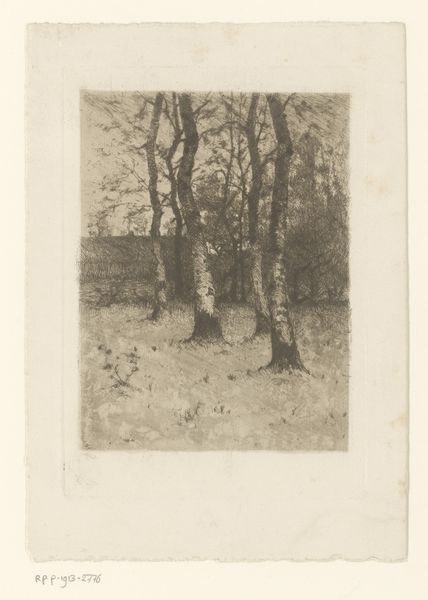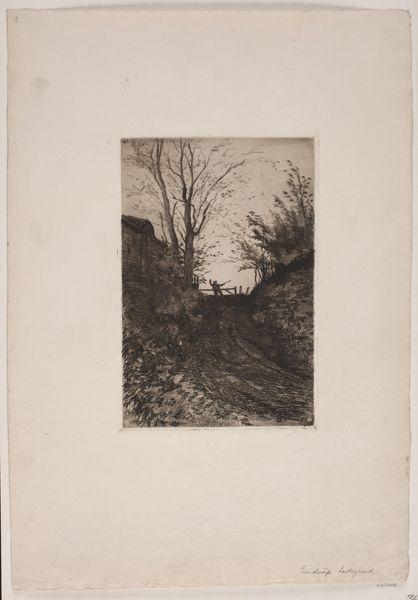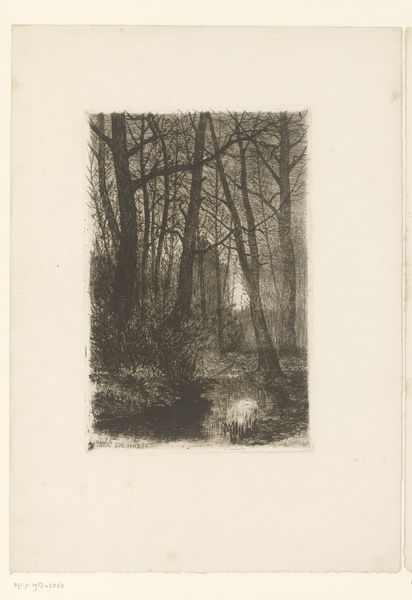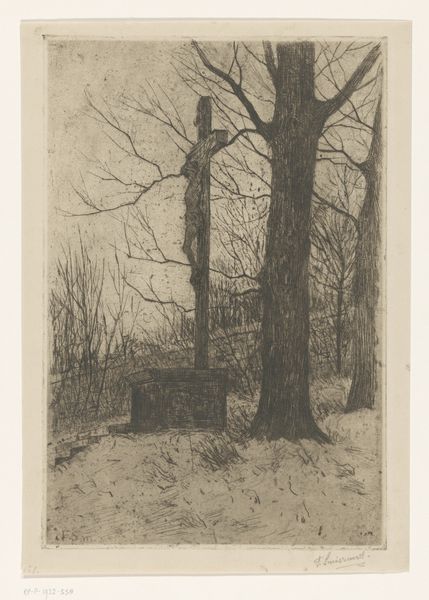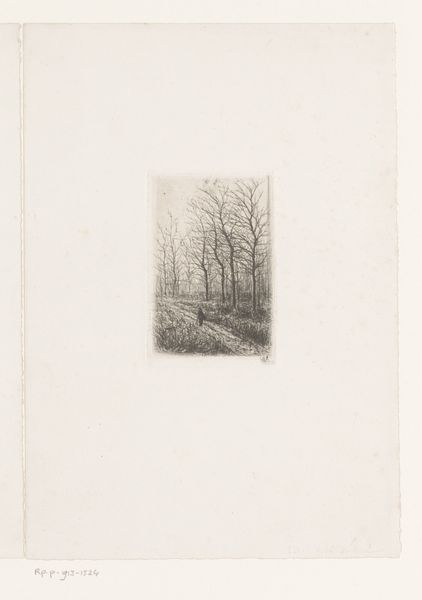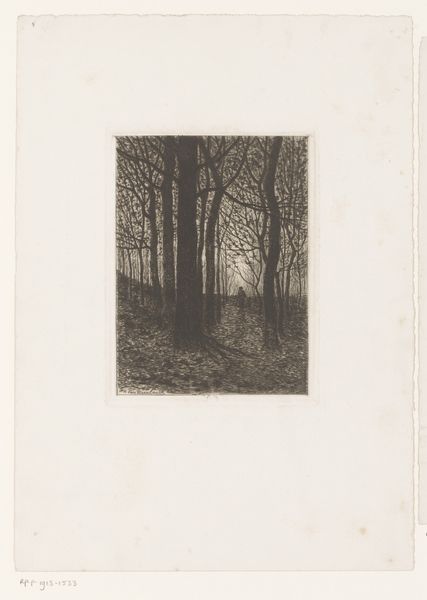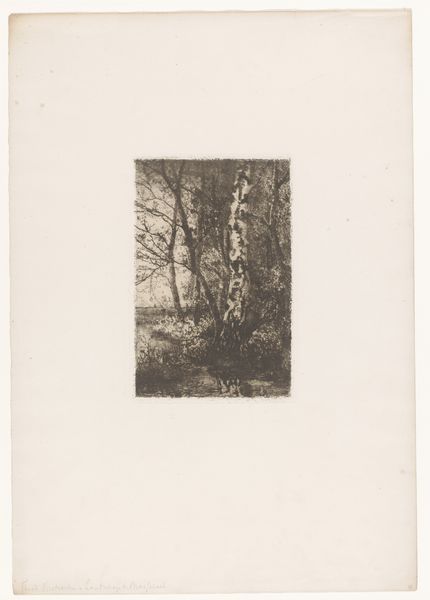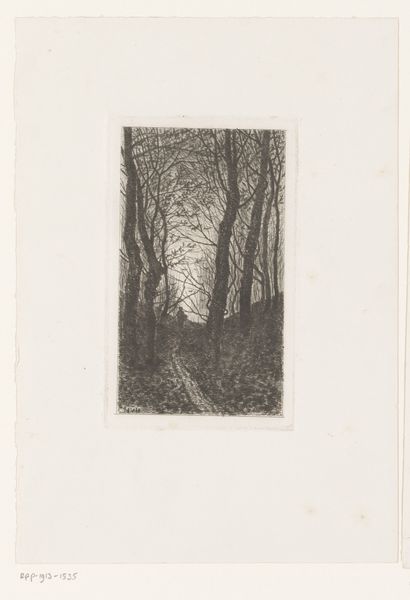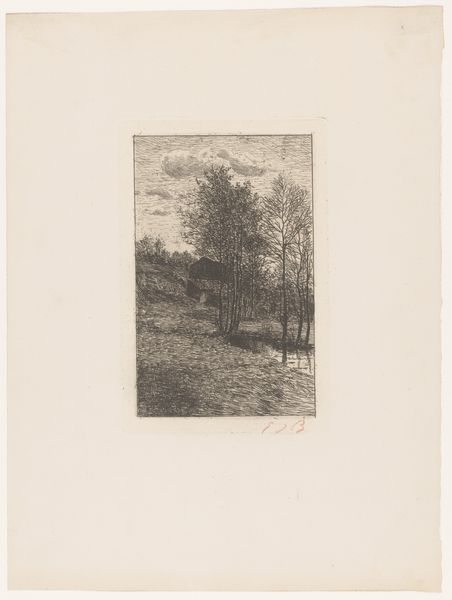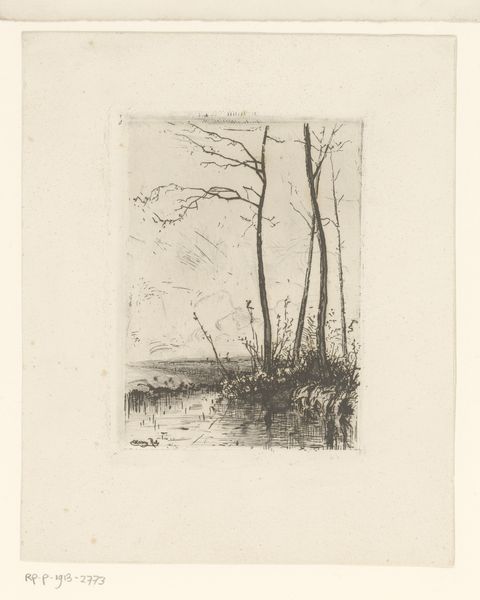
print, etching
# print
#
etching
#
landscape
#
realism
Dimensions: height 335 mm, width 270 mm
Copyright: Rijks Museum: Open Domain
Curator: "Landschap met vier bomen in de avond," or Landscape with Four Trees in the Evening, is an etching by Omer Coppens created sometime between 1874 and 1909. It presents a landscape dominated by, well, four trees in the evening. Editor: My first impression is one of quiet solitude, perhaps even a touch of melancholy. The monochromatic palette and bare branches create a somber mood. Curator: Absolutely. Coppens uses the etching process to build a composition with varied tonal richness through tiny, intricate linear structures, creating an effect akin to layering different materials. One can almost feel the pressure he would have had to apply and imagine the number of tiny choices behind each individual etched line. Editor: Agreed, the technique itself adds to the feeling of depth, the artist emphasizes what kind of labor it took to complete the artwork. I'm particularly struck by how the realism in the bare trees against the faint glow suggests a transition, possibly mirroring social transformations. What role did urbanization and industrial changes of that period have on such landscape paintings, I wonder? Curator: A vital context to consider! One argument to consider might be that urbanization changed the public conception of land itself, perhaps changing Coppens and his patron’s understanding of nature as something which can be acquired, consumed, and commodified as part of a burgeoning market? The production of images like this one might represent these values on the production of art and the commodification of land, Editor: Certainly. This period saw landscapes serving as projections of national identity but also private ownership. The contrast between the enduring natural world and human endeavors highlights pressing questions around sustainability and collective responsibility in the face of increasing global environmental anxieties. Curator: Indeed, by focusing on the trees and how the trees intersect with industrial development and economic change, one can uncover critical threads about nature. A great reminder of the interconnectedness of labor, materials, environment, and culture. Editor: A somber mood in which it inspires us to reconsider how these relationships play out today!
Comments
No comments
Be the first to comment and join the conversation on the ultimate creative platform.
